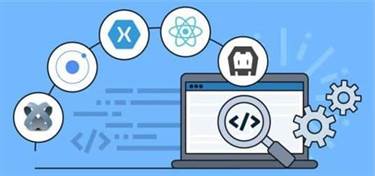So, in the terminology of the documentation, if the lastly block completes normally, then the strive statement completes abruptly for reason R. This code will increase numberOfUsers until it exceeds the maximum really helpful quantity, after which it will throw an exception. Since this exception handling is a checked exception, we’ve to add the throws clause within the methodology signature. When building functions – they may run into every kind of outstanding situations.

When a perform known as in C, a variable named errno is mechanically assigned a code (value) which can be utilized to identify the kind of error that has been encountered. Different codes (values) for errno mean various varieties of errors. The use of exceptions to handle errors has some advantages over conventional error-management methods.
The Catch Or Specify Requirement
Basic I/O. In the above instance, 100/0 raises an ArithmeticException which is dealt with by a try-catch block. Sometimes, the built-in exceptions in Java usually are not in a position to describe a sure scenario. In such instances, customers can even create exceptions, which are known as ‘user-defined Exceptions’. In Java, the finally block is at all times executed irrespective of whether or not there’s an exception or not. Here, we now have positioned the code that might generate an exception contained in the strive block.
The Exception courses are created to specify totally different sorts of Exception eventualities so that we are ready to simply establish the foundation cause and handle the Exception based on its kind. The Throwable class implements the Serializable interface for interoperability. Java Exception handling framework is used to deal with runtime errors solely. The compile-time errors have to be mounted by the developer writing the code else this system won’t execute.

We are required to mark our technique signature with a throws clause. A methodology can add as many exceptions as needed in its throws clause, and may throw them later on within the code, but doesn’t have to. This technique would not require a return statement, despite the very fact that it defines a return type. This is as a end result of it throws an exception by default, which ends the flow of the tactic abruptly.
Java Exception Hierarchy
If an exception occurs, the finally block is executed after the attempt…catch block. Java supplies lots of exception classes for us to make use of, however sometimes we may have to create our personal customized exception lessons. For instance, to inform the caller a couple of specific sort of exception with the appropriate message. We can have customized fields for monitoring, such as error codes. For example, let’s say we write a technique to course of solely textual content files, so we are ready to provide the caller with the suitable error code when some other type of file is sent as input. In this case, despite the very fact that the strive block throws a new IOException, we use return in the lastly block, ending it abruptly.
Java Exceptions are hierarchical and inheritance is used to categorize different types of exceptions. Throwable is the mother or father class of Java Exceptions Hierarchy and it has two child objects – Error and Exception. Exceptions are additional divided into Checked Exceptions and Runtime Exceptions. If an acceptable https://www.globalcloudteam.com/ exception handler is discovered, the exception object is passed to the handler to course of it. If there is no acceptable exception handler, found then the program terminates and prints information about the exception to the console.
An application may select to catch this exception, so as to notify the user of the issue — nevertheless it additionally may make sense for the program to print a stack trace and exit. When an error happens inside a way, the method creates an object and palms it off to the runtime system. The object, known as an exception object, accommodates information about the error, including its type and the state of the program when the error occurred. Creating an exception object and handing it to the runtime system known as throwing an exception.
If a logic error causes a null to be handed to the constructor, the constructor will throw NullPointerException. The software can catch this exception, nevertheless it in all probability makes extra sense to remove the bug that caused the exception to happen. In Java, Exception is an unwanted or sudden event, which occurs through the execution of a program, i.e. at run time, that disrupts the normal circulate of the program’s directions. When an exception happens within a method, it creates an object.
Greatest And Worst Exception Dealing With Practices
An exception handler is taken into account appropriate if the type of the exception object thrown matches the type that can be dealt with by the handler. These are distinctive circumstances that a well-written software ought to anticipate and get well from. For example, suppose an application prompts a consumer for an enter file name, then opens the file by passing the name to the constructor for java.io.FileReader. Normally, the person offers the name of an present, readable file, so the construction of the FileReader object succeeds, and the execution of the appliance proceeds normally. But typically the person provides the name of a nonexistent file, and the constructor throws java.io.FileNotFoundException.
- In this article, we’ll discuss the idea of exception dealing with, its importance, and best practices for implementing it successfully in varied programming languages.
- Let’s see an example of Java Exception Handling in which we’re utilizing a try-catch assertion to handle the exception.
- Since this is a checked exception, we’ve to add the throws clause within the method signature.
- If we prolong RuntimeException, there isn’t a need to specify it in the throws clause.
- Yes, whereas it is higher than merely ignoring the exception, by printing out the relevant information, this doesn’t deal with the distinctive condition any more than ignoring it does.
- We know that exceptions abnormally terminate the execution of a program.
In such instances, we should always only concern ourselves with generating them when wanted and allowing another person, calling our technique, to handle them appropriately. When throwing an exception, we will either throw a new exception, like in the preceding instance, or a caught exception. Errno is a world variable indicating the error occurred throughout any perform name and it is outlined inside header file.
Yes, while it’s better than merely ignoring the exception, by printing out the related information, this doesn’t handle the distinctive situation any greater than ignoring it does. In this case, the tactic is throwing a NumberFormatException which is a runtime exception. Because of this, we don’t have to mark the strategy signature with both NumberFormatException or Throwable. The best method to care for a compiler error when dealing with a checked exception is to easily throw it. When ordering a product from an internet store – the product is in all probability not available in inventory or there would possibly occur a failure in delivery. Such distinctive conditions can be countered by manufacturing another product or sending a brand new one after the supply failed.

If we fail to handle such conditions, the entire utility will end up in ruins, and all different code turns into obsolete. Therefore, we should be succesful of write code that can adapt to such situations. This section describes the try-with-resources assertion, which is a attempt statement that declares a quantity of assets. A resource is as an object that have to be closed after this system is completed with it. The try-with-resources statement ensures that each resource is closed on the finish of the statement. This part covers the throw assertion and the Throwable class and its subclasses.
Built-in exceptions are the exceptions which are obtainable in Java libraries. These exceptions are appropriate to clarify sure error conditions. The term exception is shorthand for the phrase “distinctive event.” It could be better when you might point out the term chain of duty which used in exception dealing with. Using Checked Exceptions has the benefit of aiding developers with understanding which exceptions you’ll have the ability to anticipate and take acceptable action to deal with them.
If you attempt to compile the ListOfNumbers class, the compiler prints an error message about the exception thrown by the FileWriter constructor. However, it doesn’t display an error message concerning the exception thrown by get. Some programmers contemplate the Catch or Specify Requirement a serious flaw within the exception mechanism and bypass it by utilizing unchecked exceptions in place of checked exceptions. The part Unchecked Exceptions — The Controversy talks about when it’s applicable to make use of unchecked exceptions. If a method does not deal with exceptions, the sort of exceptions which will occur within it should be specified within the throws clause.
Using exceptions for this function is ineffective and sluggish. Exceptions are designed for exceptional code and ought to be used for exceptional code. With all that coated, you ought to be fairly conversant in how exceptions work and tips on how to use them.